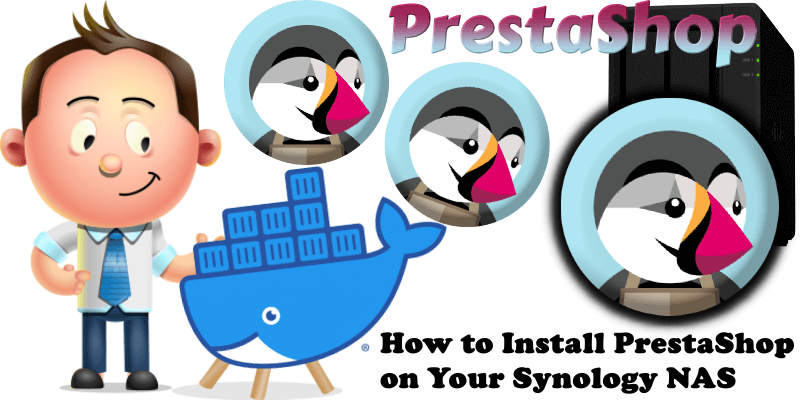
PrestaShop is an open source e-commerce web application, committed to providing the best shopping cart experience for both merchants and customers. It is written in PHP, is highly customizable, supports all the major payment services, is translated in many languages and localized for many countries, and has a fully responsive design (both front and back office). In this step by step guide I will show you how to install PrestaShop on your Synology NAS using Docker & Portainer.
STEP 1
Please Support My work by Making a Donation.
STEP 2
Install Portainer using my step by step guide. If you already have Portainer installed on your Synology NAS, skip this STEP. Attention: Make sure you have installed the latest Portainer version.
STEP 3
Make sure you have a synology.me Wildcard Certificate. Follow my guide to get a Wildcard Certificate. If you already have a synology.me Wildcard certificate, skip this STEP.
STEP 4
Go to Control Panel / Login Portal / Advanced Tab / click Reverse Proxy. Follow the instructions in the image below.
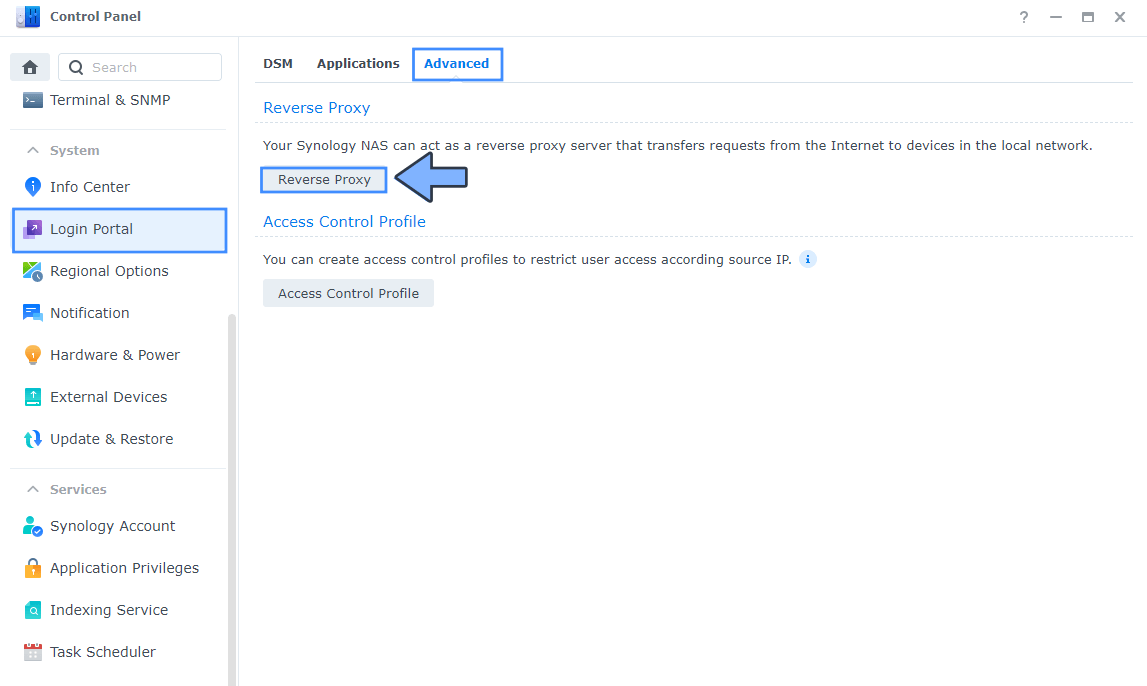
STEP 5
Now click the “Create” button. Follow the instructions in the image below.
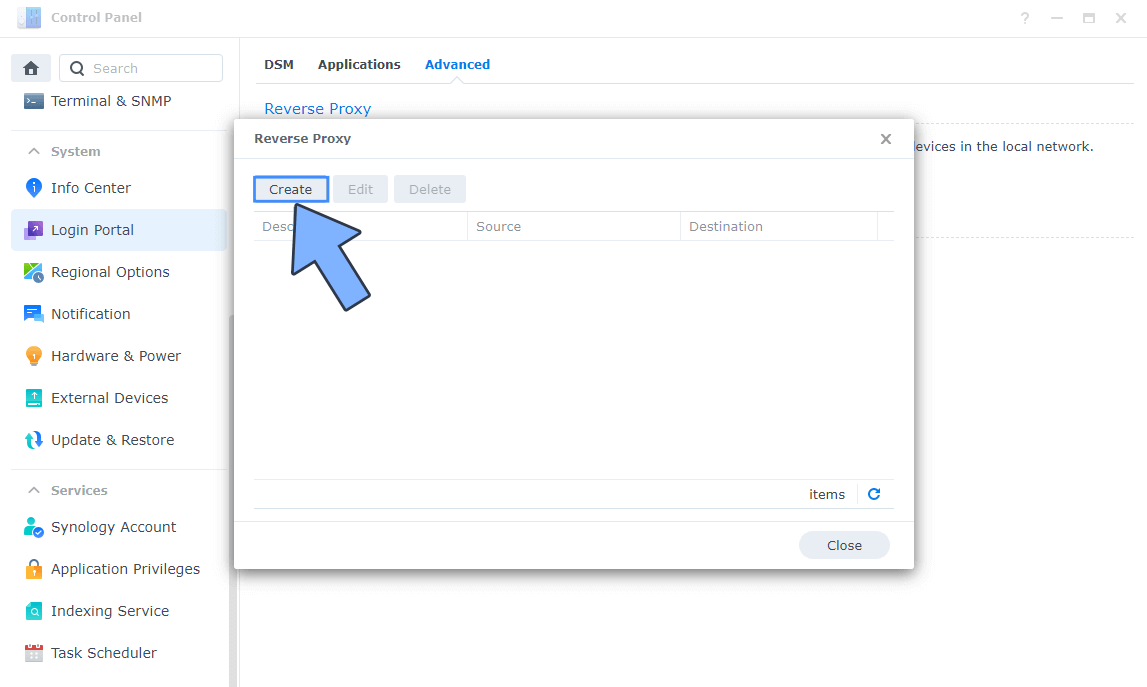
STEP 6
After you click the Create button, the window below will open. Follow the instructions in the image below.
On the General area, set the Reverse Proxy Name description: type in PrestaShop. After that, add the following instructions:
Source:
Protocol: HTTPS
Hostname: prestashop.yourname.synology.me
Port: 443
Check Enable HSTS
Destination:
Protocol: HTTP
Hostname: localhost
Port: 8779
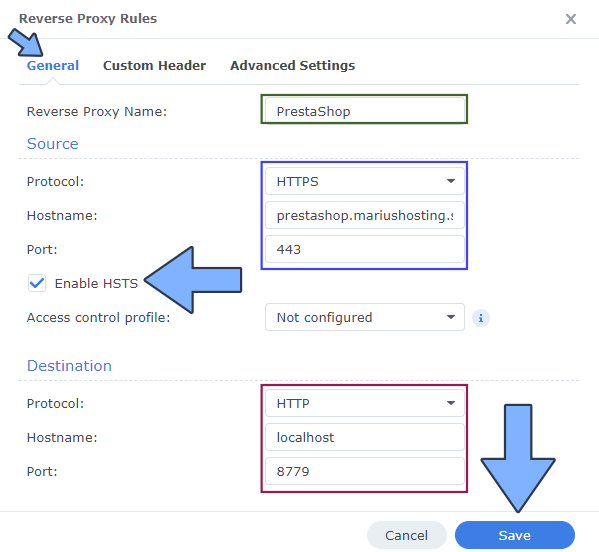
STEP 7
On the Reverse Proxy Rules click the Custom Header tab. Click Create and then, from the drop-down menu, click WebSocket. After you click on WebSocket, two Header Names and two Values will be automatically added. Click Save. Follow the instructions in the image below.

STEP 8
On the Reverse Proxy Rules, click the Advanced Settings tab.
- Increase the Proxy connection timeout from 60 to 600 seconds.
- Increase the Proxy send timeout from 60 to 600 seconds.
- Increase the Proxy read timeout from 60 to 600 seconds.
Click Save to save the settings.
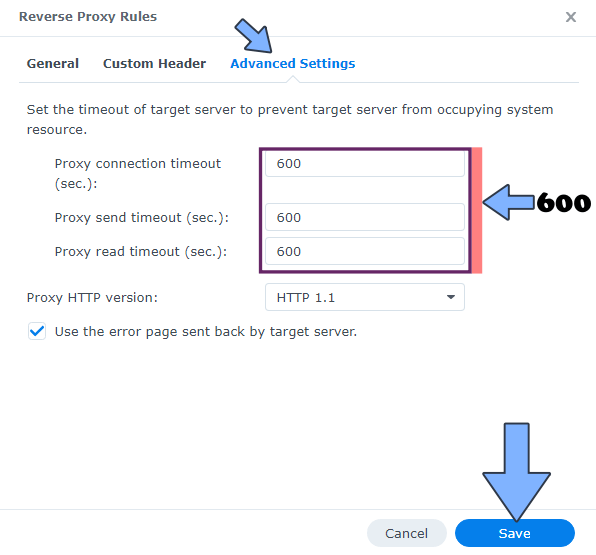
STEP 9
Go to Control Panel / Network / Connectivity tab/ Check Enable HTTP/2 then click Apply. Follow the instructions in the image below.
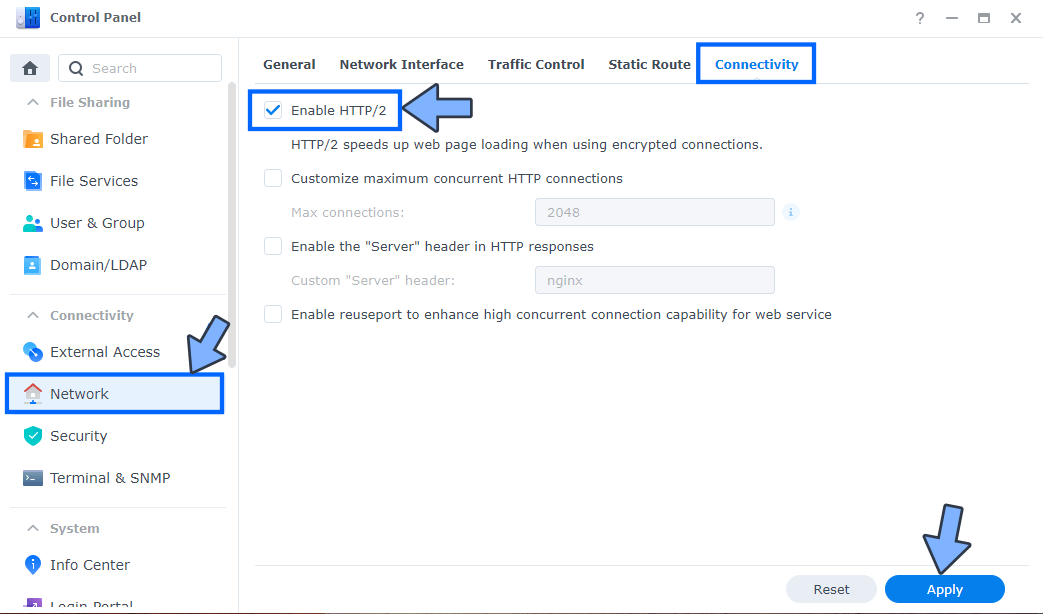
STEP 10
Go to Control Panel / Security / Advanced tab/ Check Enable HTTP Compression then click Apply. Follow the instructions in the image below.
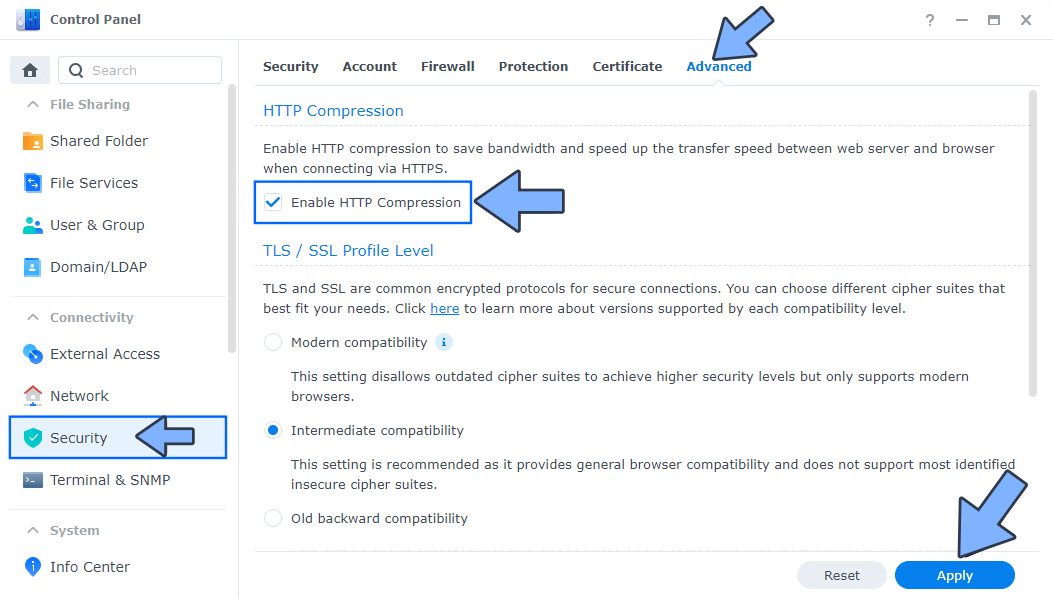
STEP 11
Go to File Station and open the docker folder. Inside the docker folder, create one new folder and name it prestashop. Follow the instructions in the image below.
Note: Be careful to enter only lowercase, not uppercase letters.

STEP 12
Now create two new folders inside the prestashop folder that you created at STEP 11 and name them data and db. Follow the instructions in the image below.
Note: Be careful to enter only lowercase, not uppercase letters.
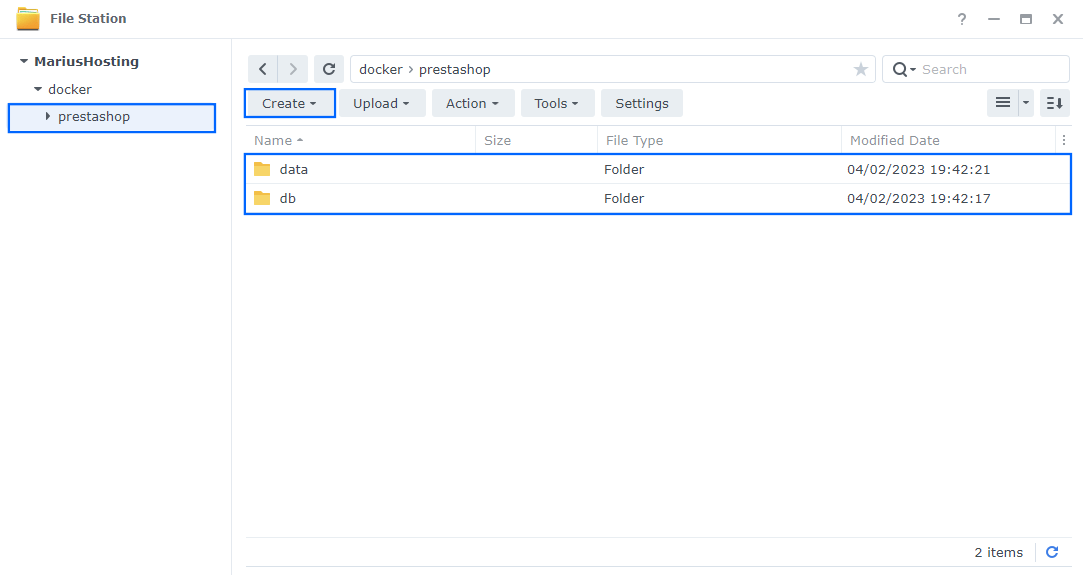
STEP 13
Download (click on the blue link below) and upload the my.cnf file below in the db folder that you have previously created at STEP 12. Follow the instructions in the image below. 🔒Note: Support my work to unlock the password. You can use this password to download any file on mariushosting forever!
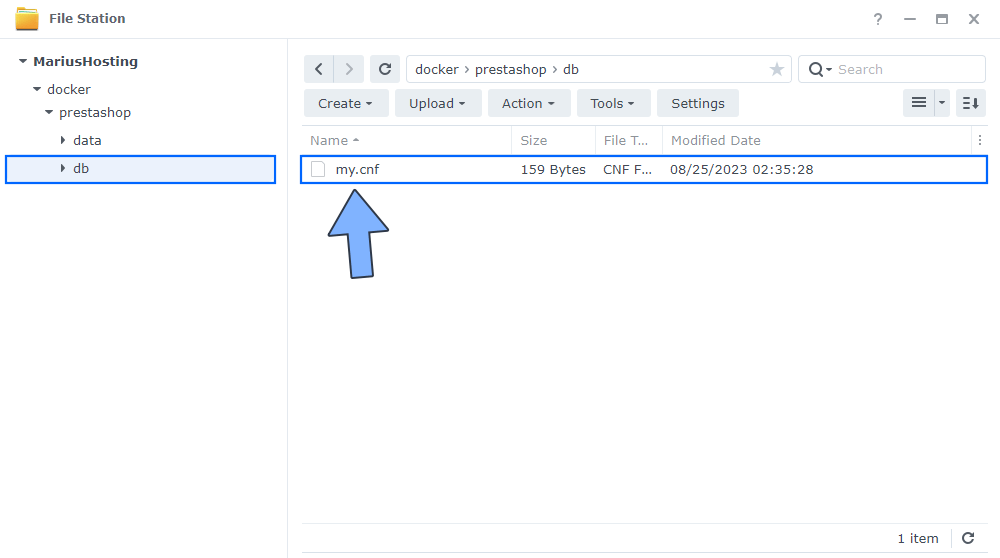
STEP 14
Log into Portainer using your username and password. On the left sidebar in Portainer, click on Home then Live connect. Follow the instructions in the image below.

On the left sidebar in Portainer, click on Stacks then + Add stack. Follow the instructions in the image below.

STEP 15
In the Name field type in prestashop. Follow the instructions in the image below.
services:
db:
image: mariadb:11.4-noble #LTS Long Time Support Until May 29, 2029.
container_name: PrestaShop-DB
hostname: prestashop-db
mem_limit: 1g
cpu_shares: 768
security_opt:
- no-new-privileges:false
volumes:
- /volume1/docker/prestashop/db:/var/lib/mysql:rw
- /volume1/docker/prestashop/db:/etc/mysql/conf.d:rw
environment:
TZ: Europe/Bucharest
MYSQL_ROOT_PASSWORD: rootpass
MYSQL_USER: prestashopuser
MYSQL_PASSWORD: prestashoppass
MYSQL_DATABASE: prestashop
restart: on-failure:5
prestashop:
image: prestashop/prestashop:8
container_name: PrestaShop
hostname: prestashop
mem_limit: 3g
cpu_shares: 1024
security_opt:
- no-new-privileges:true
ports:
- 8779:80
volumes:
- /volume1/docker/prestashop/data:/var/www/html:rw
environment:
DB_SERVER: prestashop-db
DB_NAME: prestashop
DB_USER: prestashopuser
DB_PASSWD: prestashoppass
PS_DOMAIN: prestashop.yourname.synology.me
restart: on-failure:5
depends_on:
db:
condition: service_started
Note: Before you paste the code above in the Web editor area below, change the value for TZ. (Select your current Time Zone from this list.)
Note: Before you paste the code above in the Web editor area below, change the value for PS_DOMAIN and type in your own synology.me DDNS without https:// at the beginning that you have previously created at STEP 6.
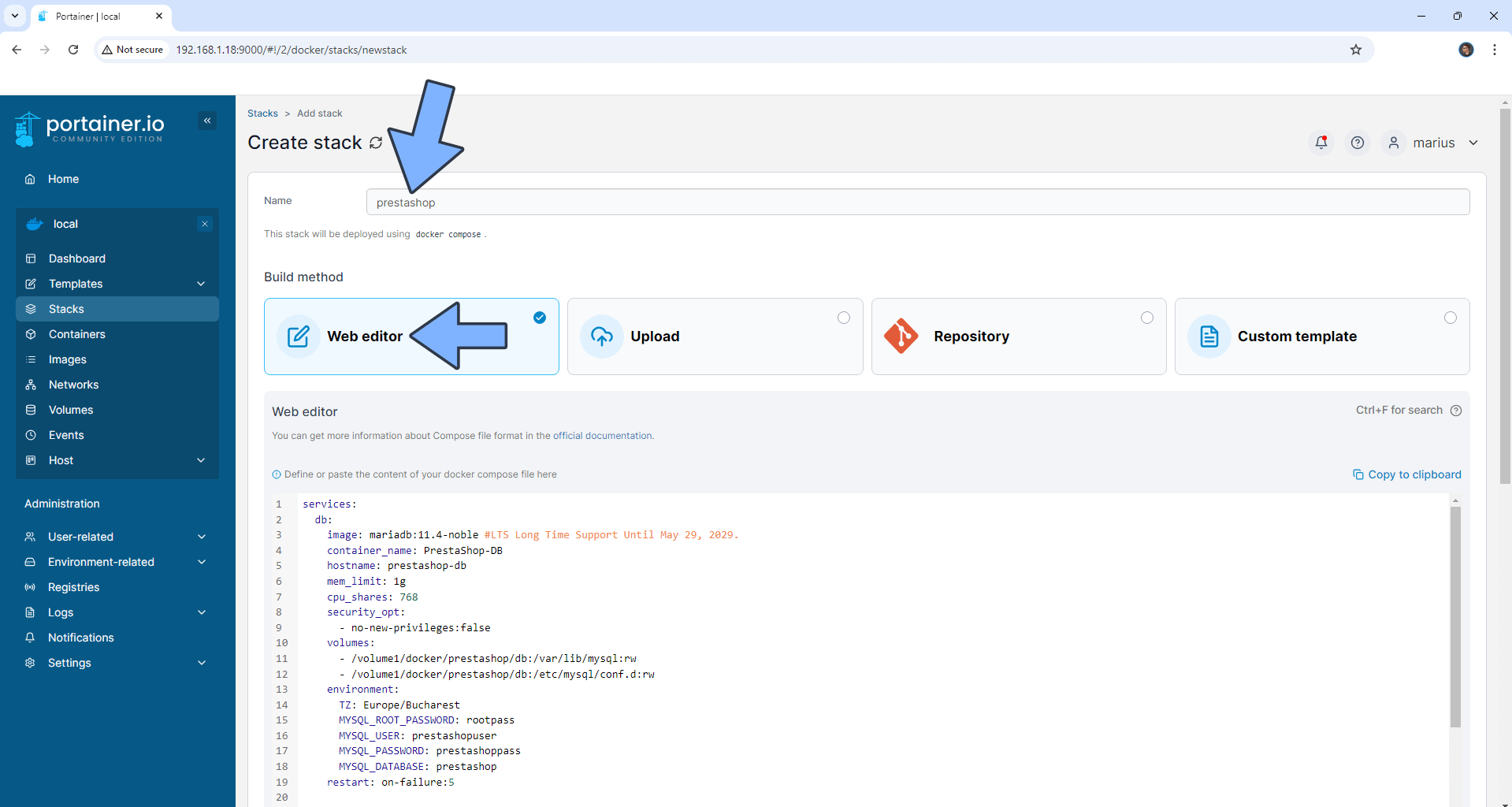
STEP 16
Scroll down on the page until you see a button named Deploy the stack. Click on it. Follow the instructions in the image below. The installation process can take up to a few minutes. It will depend on your Internet speed connection.
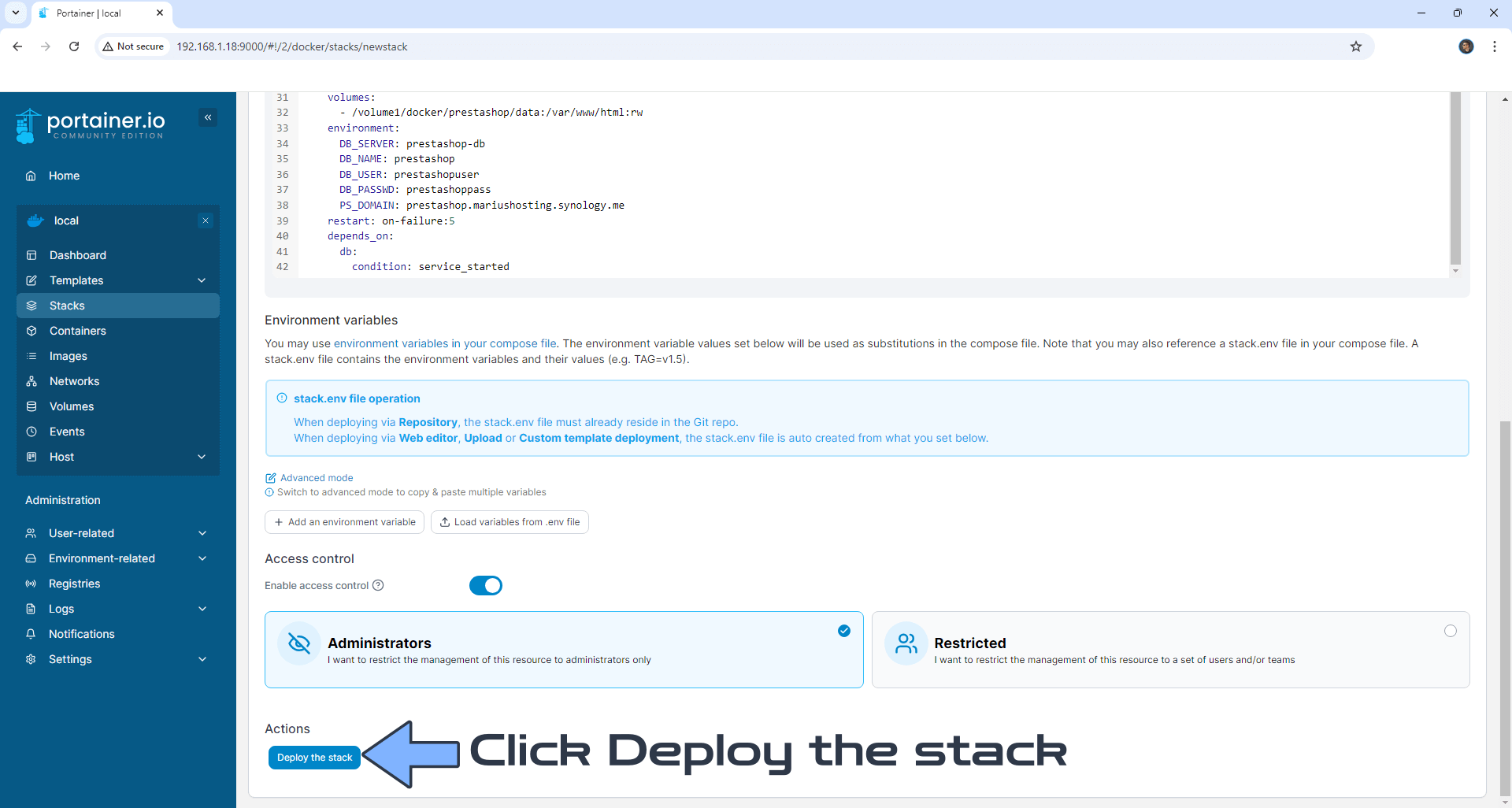
STEP 17
If everything goes right, you will see the following message at the top right of your screen: “Success Stack successfully deployed“.

STEP 18
🟢Please Support My work by Making a Donation. Almost 99,9% of the people that install something using my guides forget to support my work, or just ignore STEP 1. I’ve been very honest about this aspect of my work since the beginning: I don’t run any ADS, I don’t require subscriptions, paid or otherwise, I don’t collect IPs, emails, and I don’t have any referral links from Amazon or other merchants. I also don’t have any POP-UPs or COOKIES. I have repeatedly been told over the years how much I have contributed to the community. It’s something I love doing and have been honest about my passion since the beginning. But I also Need The Community to Support me Back to be able to continue doing this work.
STEP 19
Now open your browser and type in your HTTPS/SSL certificate like this https://prestashop.yourname.synology.me In my case it’s https://prestashop.mariushosting.synology.me If everything goes right, you will see the PrestaShop installation page. Choose your language then click Next. Follow the instructions in the image below.
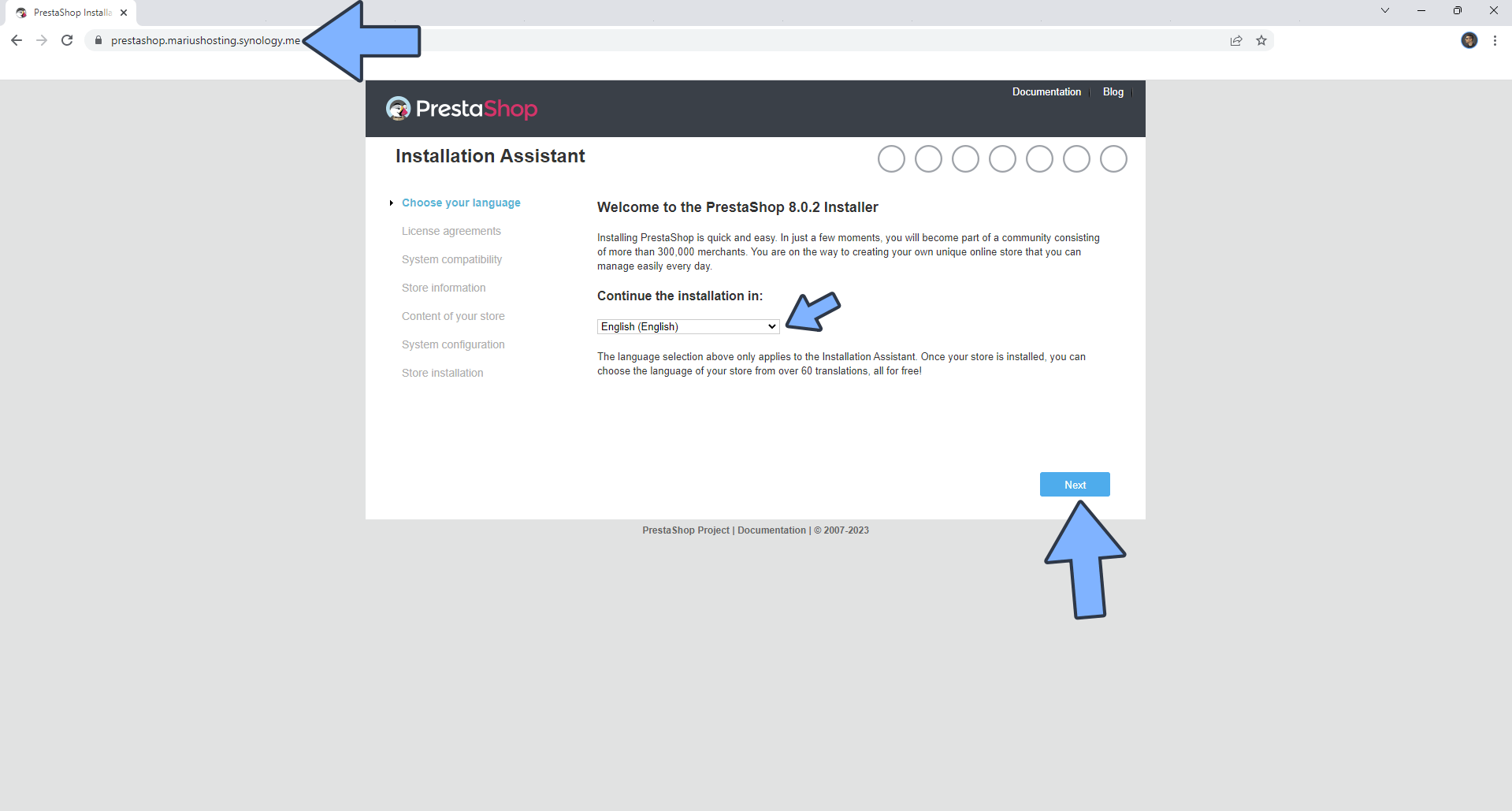
STEP 20
Check the License Agreements then click Next. Follow the instructions in the image below.
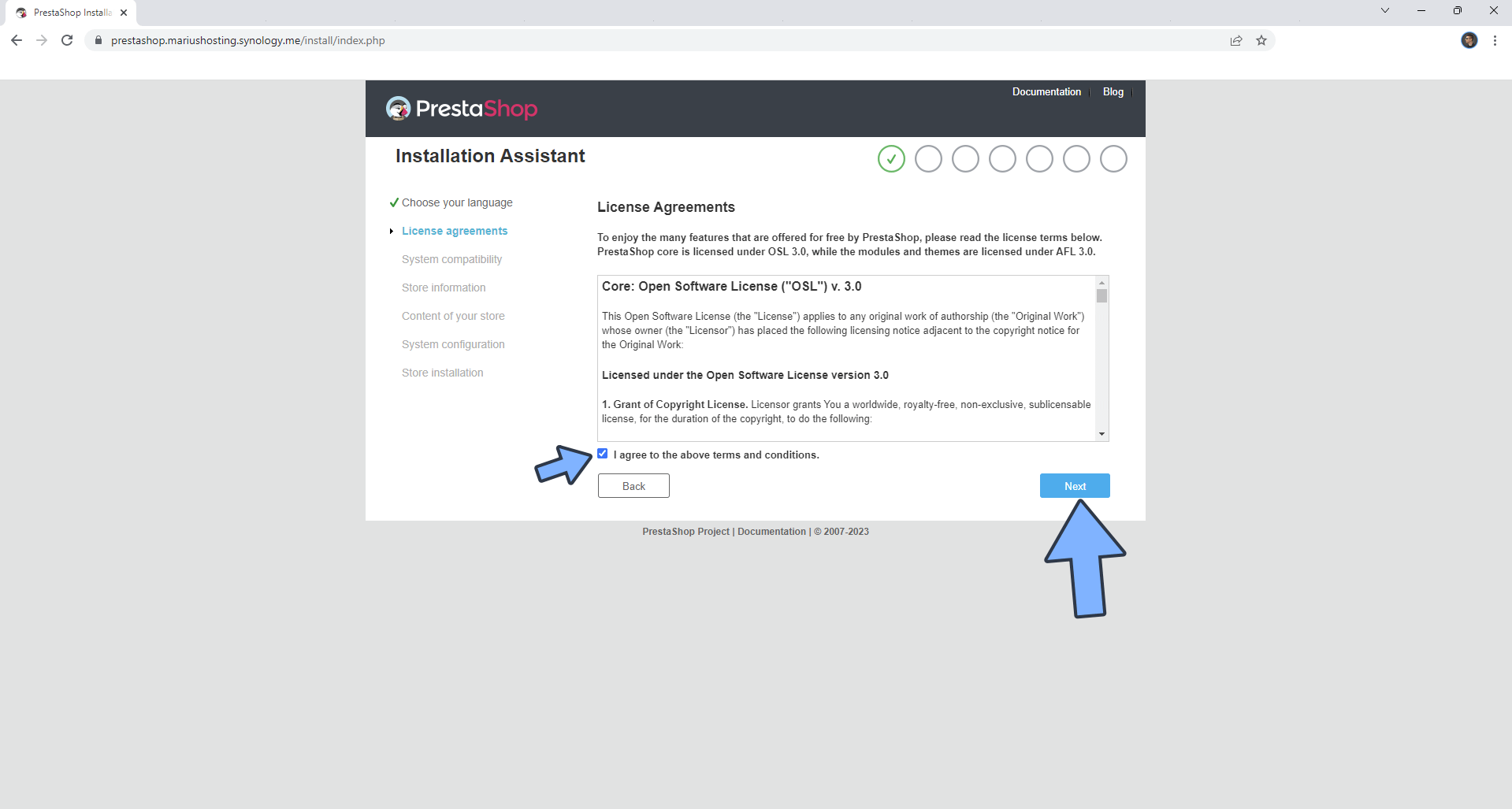
STEP 21
Type in your own details. Select Yes to enable SSL. Click Next. Follow the instructions in the image below. Note: Write down and save your Email and Password because you will need them later at STEP 29.
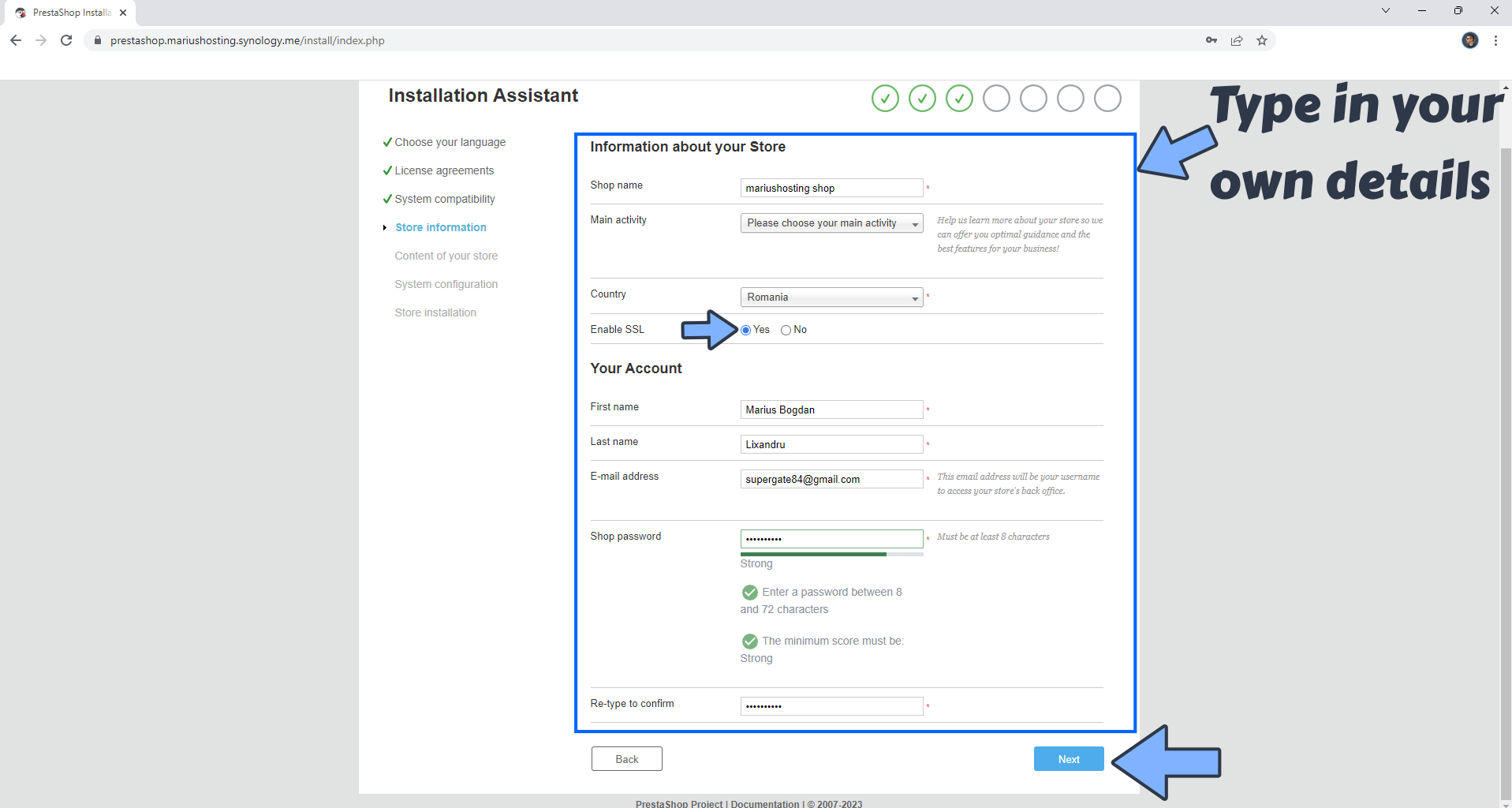
STEP 22
Installation of demo products: select NO. Installation of modules: select Install all modules. Click Next. Follow the instructions in the image below.
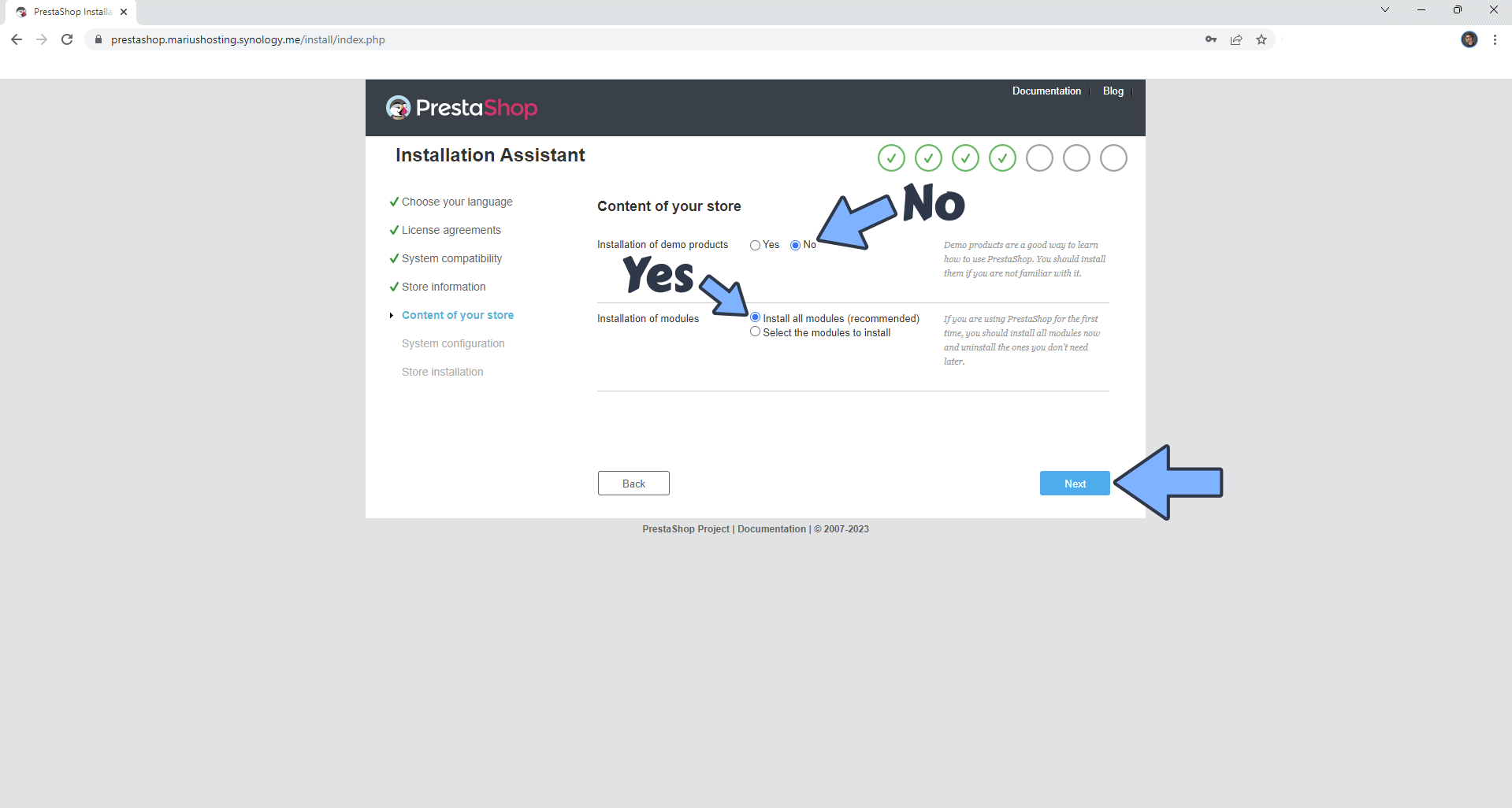
STEP 23
Add the following parameters. After that, click Test your database connection now!. Follow the instructions in the image below.
Database server address: prestashop-db
Database Name: prestashop
Database Login: prestashopuser
Database Password: prestashoppass
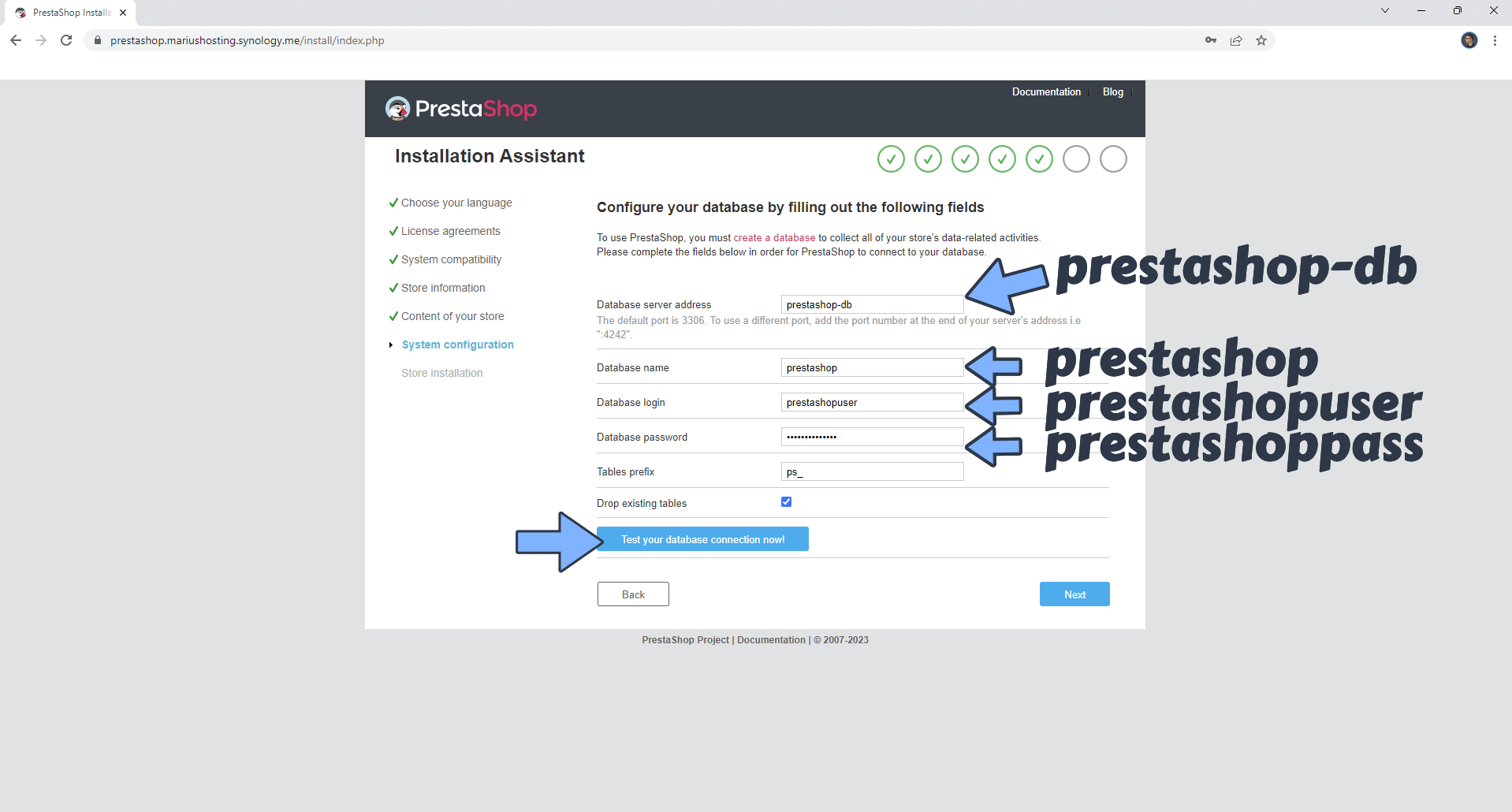
Click Attempt to create the database automatically. Follow the instructions in the image below.
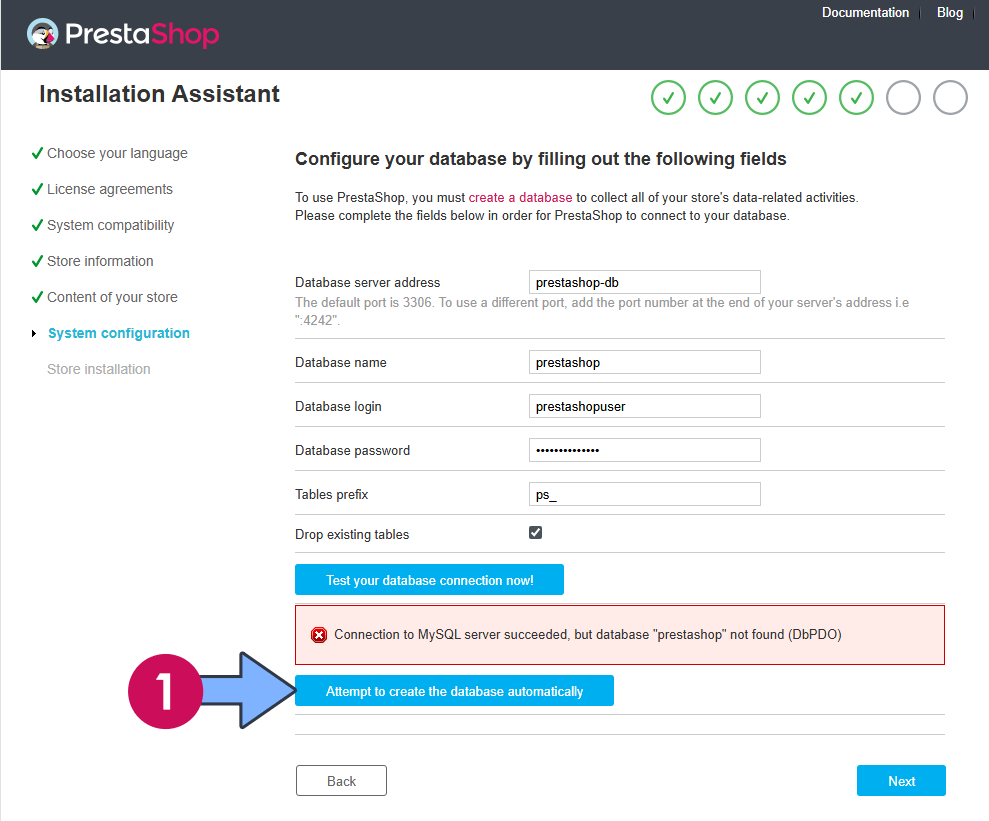
Click Next. Follow the instructions in the image below.

STEP 24
Wait until everything is installed. Follow the instructions in the image below.
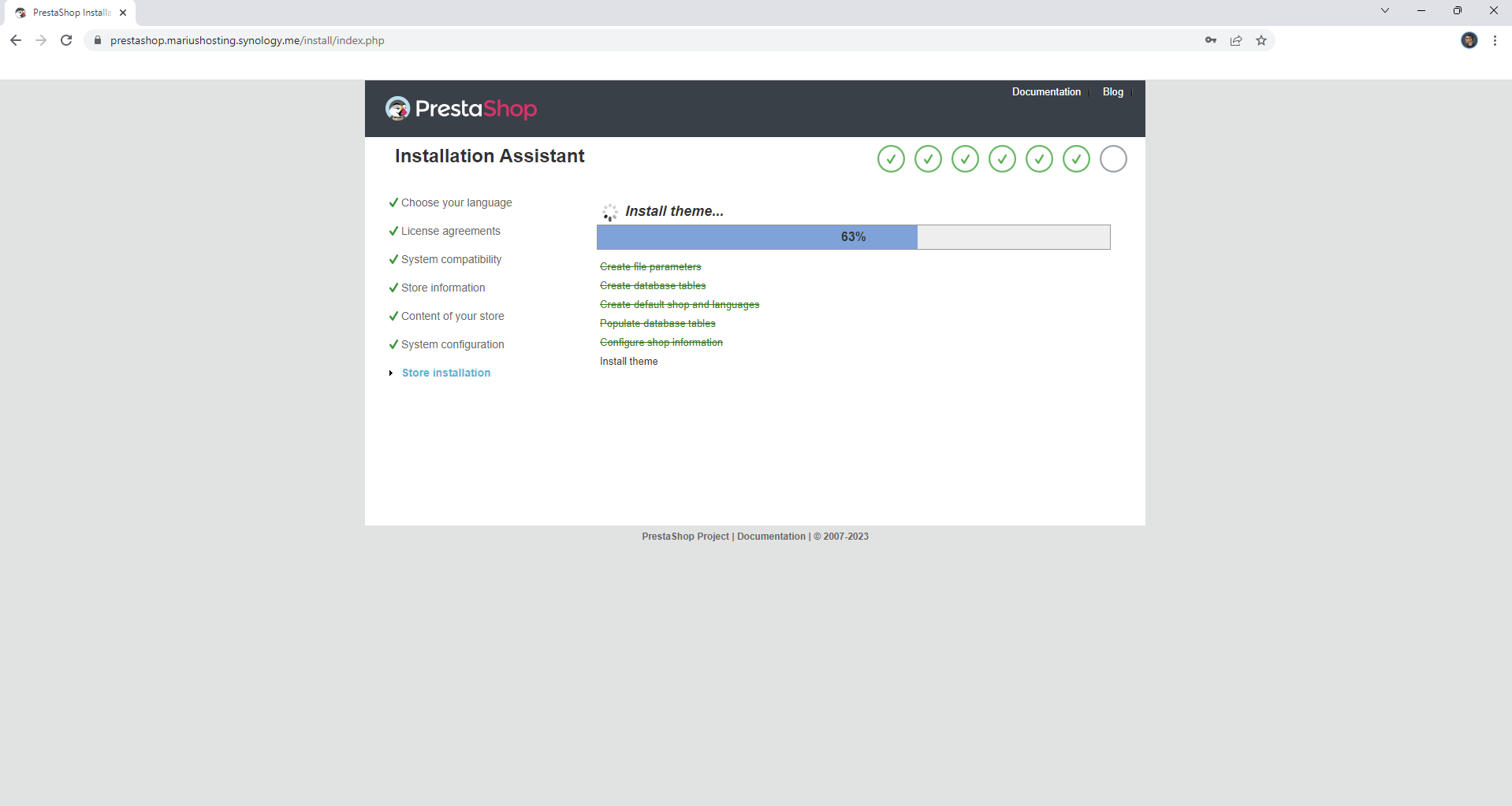
STEP 25
Once PrestaShop is installed, you will see this page. ⚠️Warning: DO NOT click on anything on this page. Go straight to STEP 26.
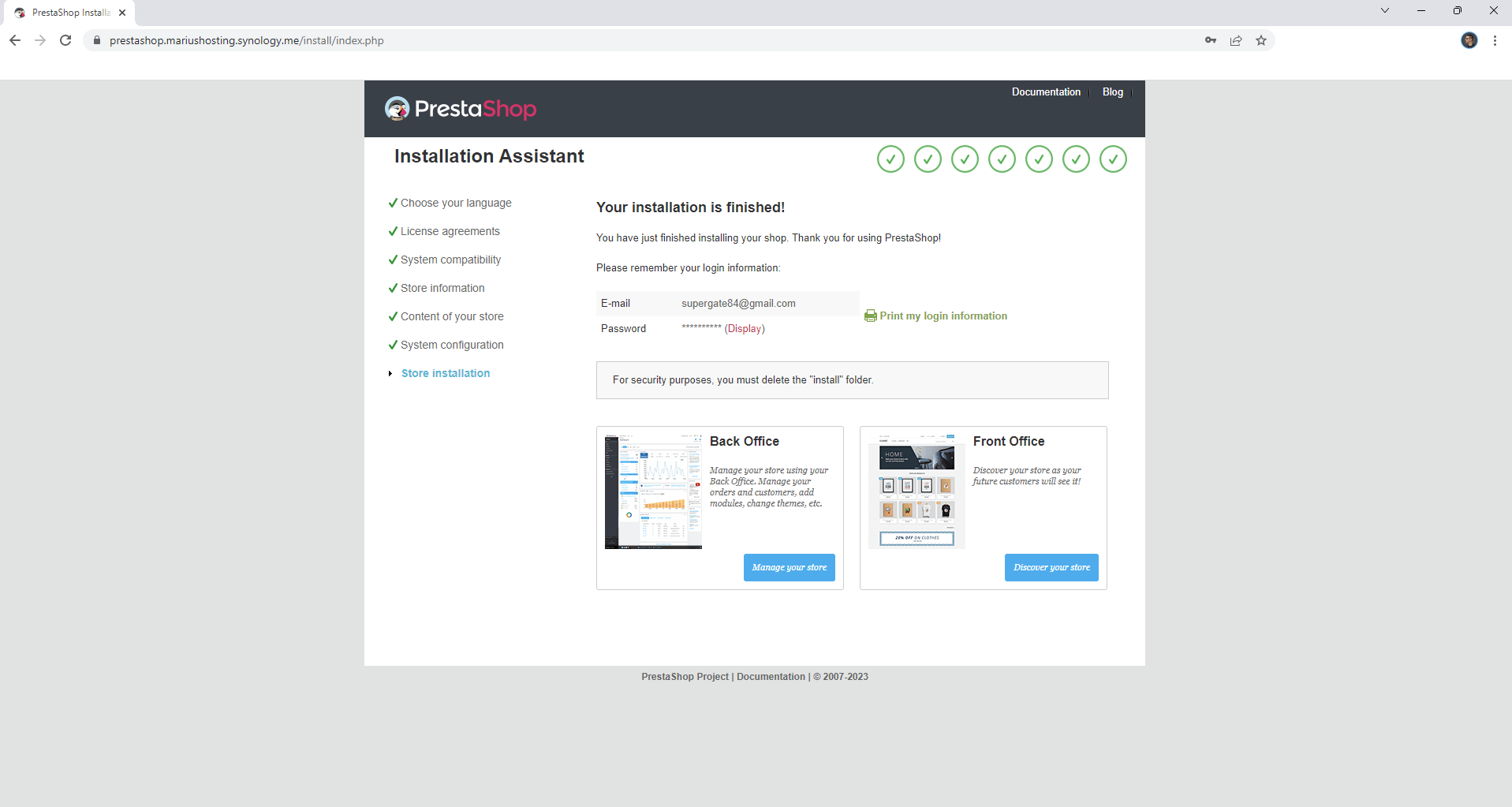
STEP 26
Go to File Station. Open the data folder inside the prestashop folder. Localize the install folder, then right mouse click on it and click Delete. Follow the instructions in the image below.
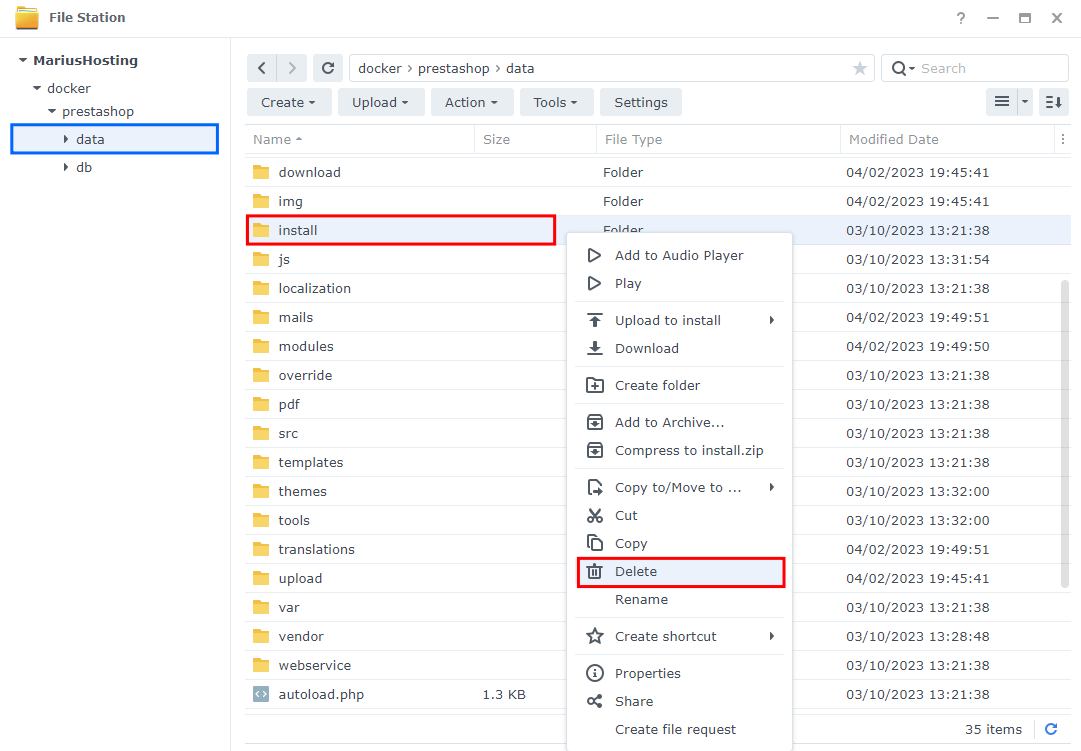
STEP 27
Go to File Station. Open the data folder inside the prestashop folder. Localize the admin folder, then right mouse click on it and click Rename. Follow the instructions in the image below.

STEP 28
Rename the admin folder, then click OK. Follow the instructions in the image below.
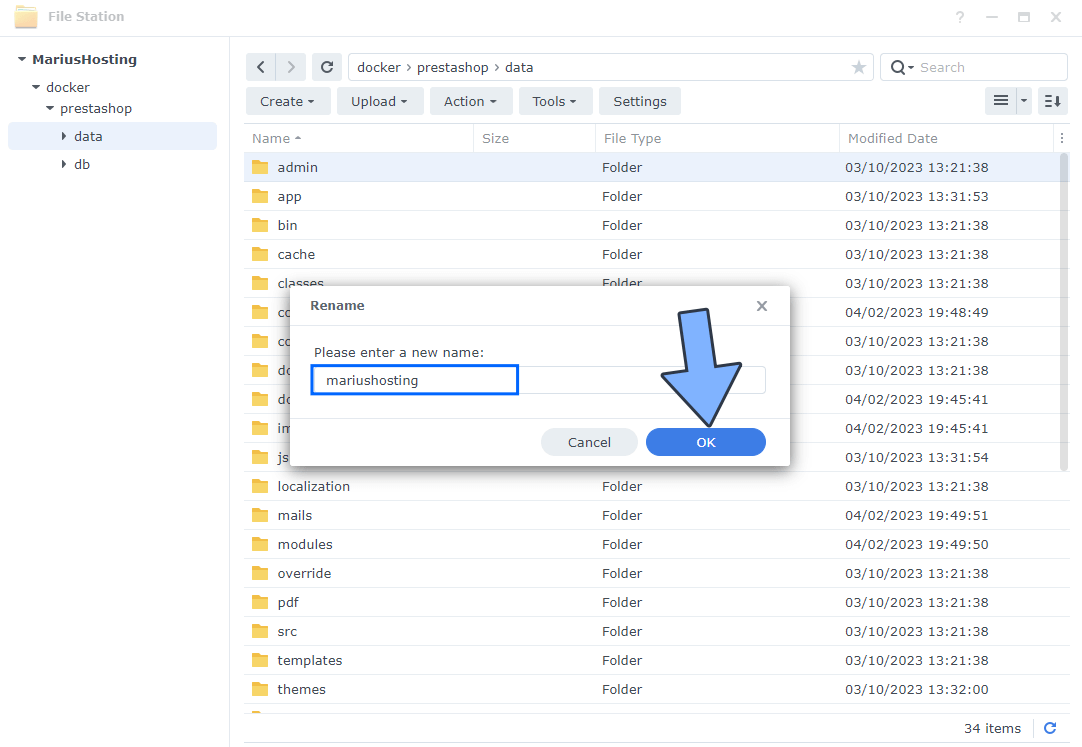
STEP 29
Now open your browser and type in your HTTPS/SSL certificate like this https://prestashop.yourname.synology.me/yourfoldername In my case it’s https://prestashop.mariushosting.synology.me/mariushosting
Note: mariushosting is the name I gave to my folder at STEP 28. You should add your own folder name that you have previously renamed.
Type in your own Email address and Password that you have previously created at STEP 21. Click LOG IN. Follow the instructions in the image below.
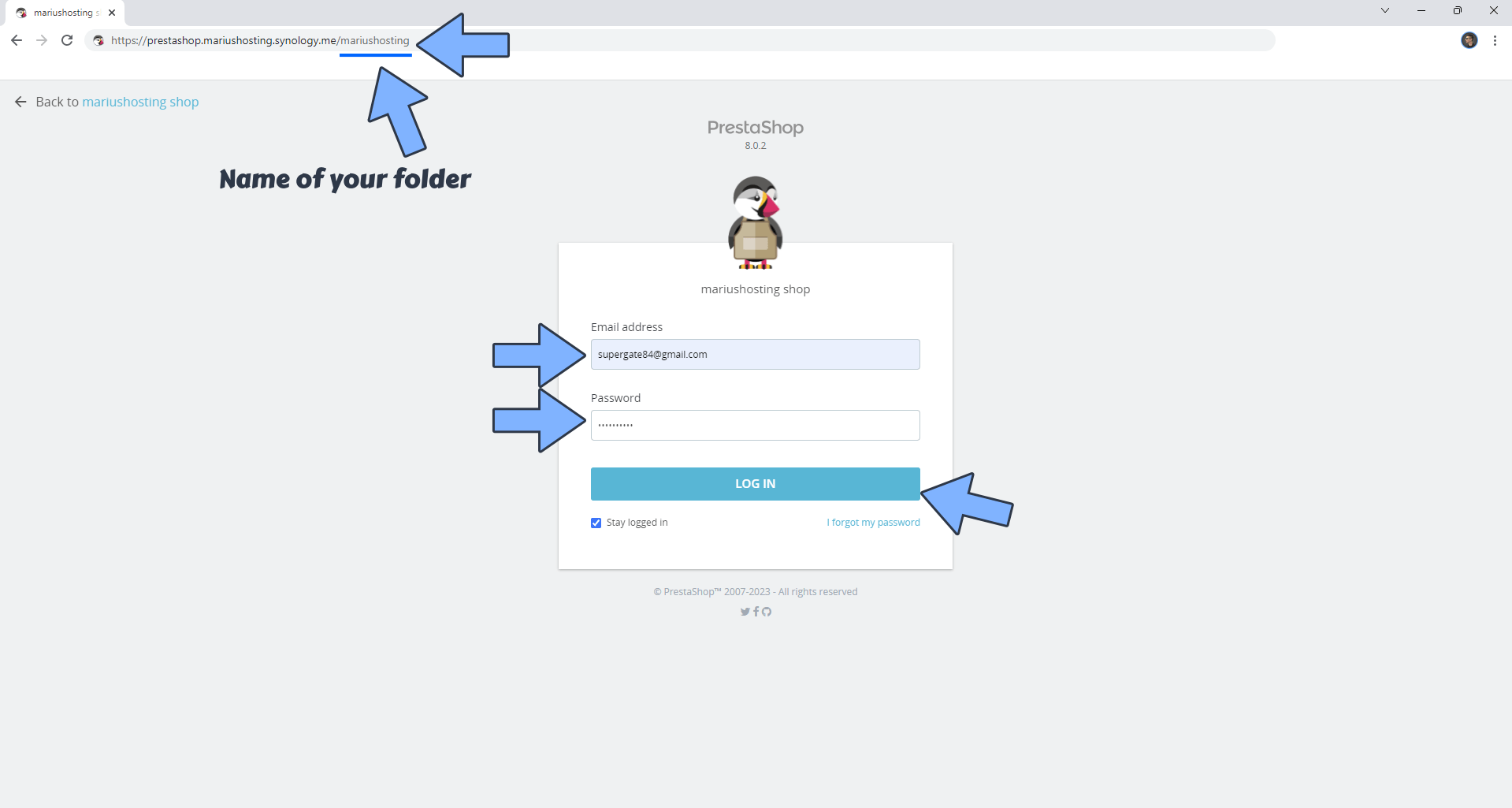
STEP 30
Your PrestaShop Dashboard at a glance!
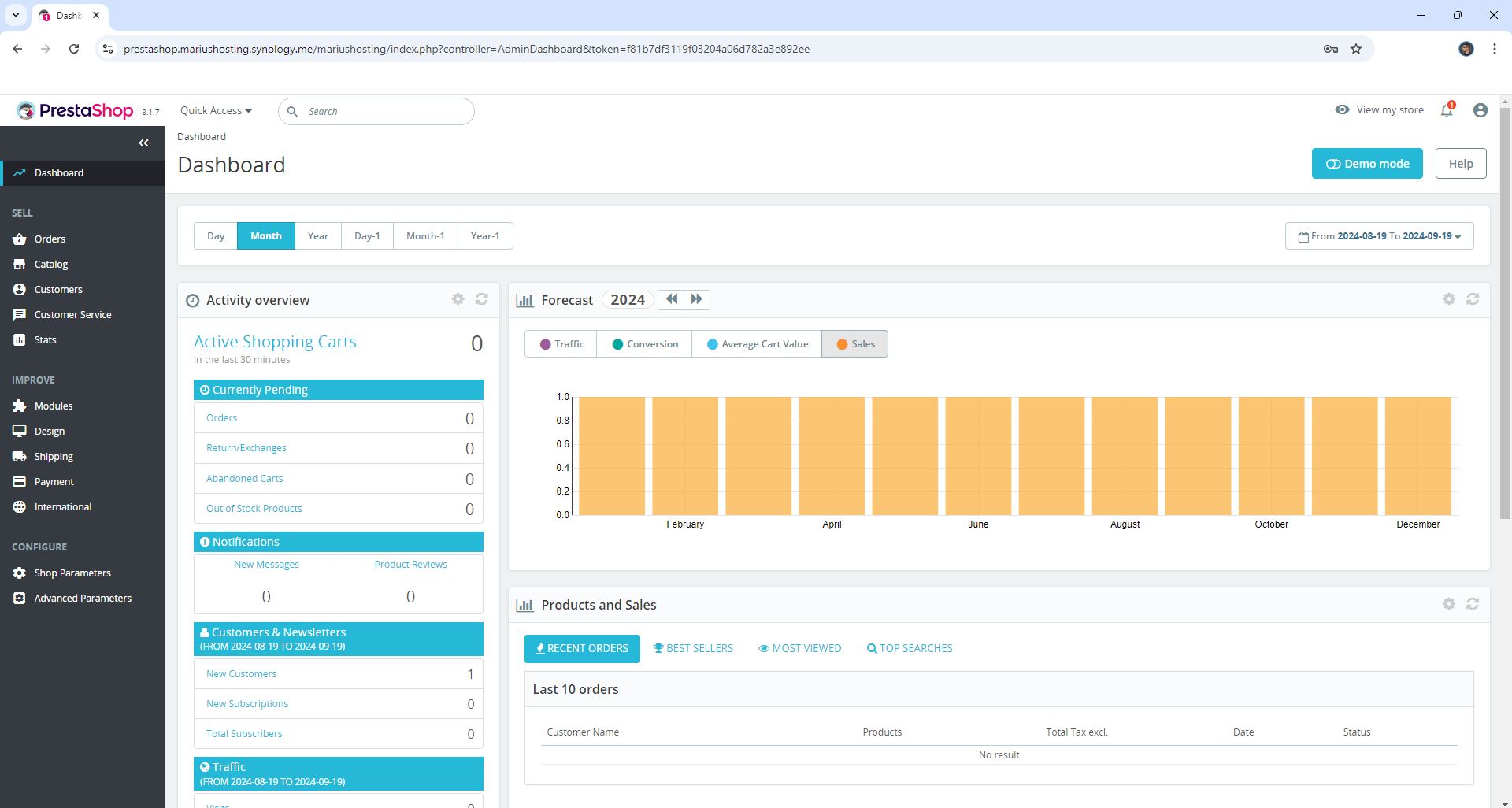
STEP 31
Set Up Email Notifications on PrestaShop.
Note: https://prestashop.yourname.synology.me/yourfoldername will be your admin dashboard page and https://prestashop.yourname.synology.me will be your Shop front page.
Note: Can I run Docker on my Synology NAS? See the supported models.
Note: How to Back Up Docker Containers on your Synology NAS.
Note: Find out how to update the PrestaShop container with the latest image.
Note: How to Free Disk Space on Your NAS if You Run Docker.
Note: Instead of the synology.me DDNS you can also use your own domain name.
Note: How to Schedule Start & Stop For Docker Containers.
Note: How to Activate Email Notifications.
Note: How to Add Access Control Profile on Your NAS.
Note: How to Change Docker Containers Restart Policy.
Note: How to Use Docker Containers With VPN.
Note: Convert Docker Run Into Docker Compose.
Note: How to Clean Docker.
Note: How to Clean Docker Automatically.
Note: Best Practices When Using Docker and DDNS.
Note: Some Docker Containers Need WebSocket.
Note: Find out the Best NAS Models For Docker.
Note: Activate Gmail SMTP For Docker Containers.
This post was updated on Tuesday / October 7th, 2025 at 10:39 PM
